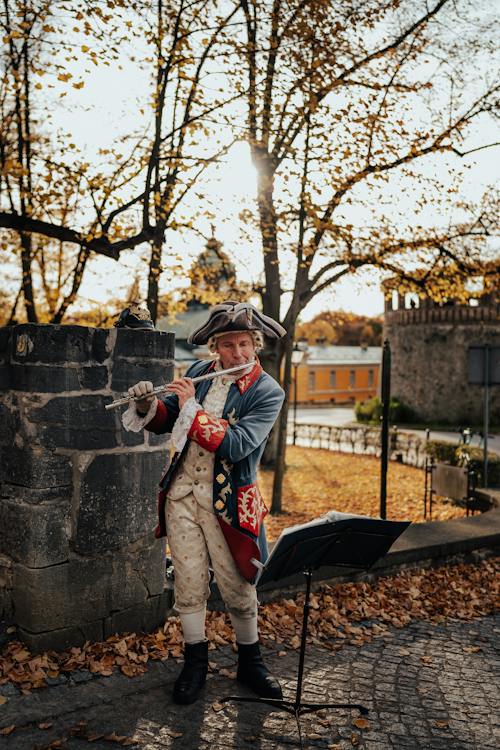Musical instruments are one of the essential indicators of the close cultural ties between the people. These ties were primarily reflected through appearances, titles, or essential tools that they were using. One example of this is the ancient instrument called Balaban. The Balaban is one of the wind instruments notable in Azerbaijan. Its name stems out of the two semantic syllables, Bala, which means little, and ban, meaning cock’s sound. Balaban is a cylindrical and double-reed wind instrument that resembles a flute. This instrument is also often called balaman, mey, duduk, or yasti Balaban because of its soft sound and flat mouthpiece. It has eight finger holeson the instrument’s surface that act as the sound tone or sas pardasi. It also has one thumb hole located on the bottom side, called nizam pardasi, made to ensure a good timbre. Balaban has four parts consist of a cap, reed, stem, and regulator.
Moreover, the Balaban is usually made out of mulberry wood or other solid woods like walnut wood, apricot wood, hazel, or pear wood. The bore of the Balaban measures 1.5 centimeters in diameter and has a reed of about six centimeters long and pressed flat at one end.Meanwhile, the stem of the Balaban, called govda, is a cylindrical tube that measures 280 to 220 millimeters long. The process of creating this instrument is called Balaban Chakma. The upper end of its stem, the bash or kup, is round in shape, whereas the lower end, or the ayag, is sharpened. The difference between the Balaban and other Azerbaijan instruments like ney, zurna, tutak, and Tulum, is the presence of the reed at the end of the instrument’s mouthpiece. This reed is a vibrating interrupter which causes the column of the air in the channel to produce a sound. In adjusting the Balaban’s pitch, a regulator shaped like a collar is placed on the mouthpiece and moved up and down.
This instrument was first used in Azerbaijan orchestra back in 1931, upon the establishment of the Folk Instrument Orchestra. As well as that the Balaban is used to accompany songs in cities like Kirkuk, Suleymaniye, and Erbil. With its warmsonority, it is also often used as a companion to the songs of heaven. Balaban can be found in several regions of Azerbaijan and Anatolia. It is also sometimes used in the West Azerbaijan region, including the Balaman, Mey, Turkistan, and Azerbaijan.
The principle thing to do in playing this instrument is to put the reed in your mouth. The musician must blow the mouthpiece. Thus, Balaban produces a sound. To play the melody, the performer must open and close the Balaban’s apertures using the fingertips. In addition to that, the performer uses the air he inhales and stored in his cheeks to keep playing the instrument. As well as storing the air, the player must also use the circular breathing technique that is commonly used in playing the double-reed instruments. The Balaban must also be kept straight and slightly tilted while the air is blown into the cane.
The sound of this instrument is light and dull, yet it is also gentle, beautiful, and sweet. Fortunately, the clamp on its reed can change the sound of the Balaban from thin to thick. Because of this, the Balaban is mostly played in close spaces or in-room meetings. Interestingly, there is another Balaban used in love music and to attract quails. On most occasions, like pastoral, funeral, wedding, and holiday ceremonies, the Balaban is played and accompanied by a percussion instrument. In a traditional Azeri musical group, the two Balaban players and a percussionist are called balabanchilar dastasi.
The Balaban can be played by both amateur or professional musicians. It can also be played in either solo, two, or accompanied by other instruments. Because of its versatile, artistic, and expressive features, it is widely used in ensembles, orchestra, as well as in solo performances. Additionally, the Balaban was also included in several ashug ensembles. Not only is the Balaban used in Azerbaijan, but also in several parts of the world like China, Japan, and Korea. The fact that the Balaban was also used in several parts of Asia to the far east indicates the broader cultural ties between people in different cultures.

